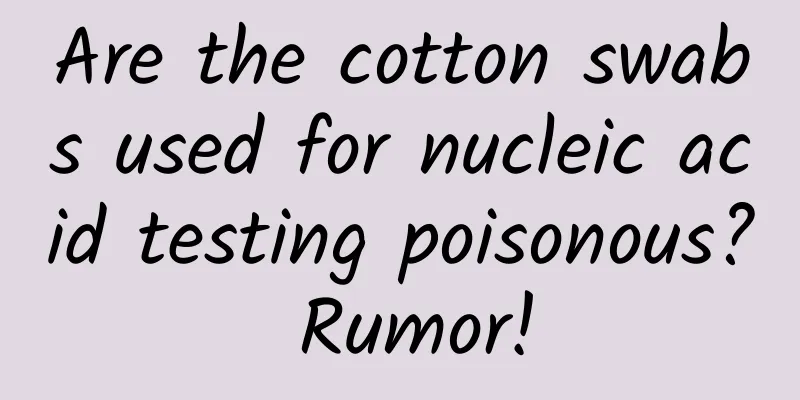[Pearl Science] A Scientific Look at Nano Pearl Powder
![[Pearl Science] A Scientific Look at Nano Pearl Powder](/upload/images/67f2a38b06aa6.webp)
|
Nanomaterials refer to materials that have at least one dimension in the three-dimensional space at the nanometer size (0.1-100 nanometers) or are composed of them as basic units. Nanomaterials can be roughly divided into four categories: nanopowders, nanofibers, nanofilms, and nanoblocks. (Note: 1 meter = 1000 millimeters, 1 millimeter = 1000 micrometers, 1 micrometer = 1000 nanometers) Nanopowder among nanomaterials, also known as ultrafine powder or ultrafine powder, generally refers to powder or particles with a particle size of less than 100 nanometers. It is a solid particulate material in an intermediate state between atoms, molecules and macroscopic objects. If the size of the pearl powder particles produced by a certain process is between "1-100 nanometers", we can also promote these pearl powders as "nano (grade) pearl powder". In fact, it is a question of internal standard grading in an enterprise. Based on the definition of nano powder, even if they are all promoted as "nano pearl powder", the particle sizes of pearl powders from different brands or even different batches of the same brand are not exactly the same. Generally speaking, the finer the pearl powder particles, the easier it is to digest. The advantage of nano pearl powder is that the particles are much finer than ordinary pearl powder. For merchants, as long as the product is genuine, the actual size of the pearl powder particles can reach the nanometer level, there are legal and compliant implementation standards (national standards, local standards or corporate standards that are publicly filed), and the actual product is consistent with the claims on the advertising packaging, nano pearl powder can still be a good selling point; and as long as the publicity is not exaggerated, there is no policy risk in terms of government supervision. For consumers, as long as the product is genuine, safe, hygienic and effective, nano pearl powder is also a good choice. However, the production process of nano pearl powder is more advanced, the cost will be higher than that of ordinary pearl powder, and the corresponding price will also be higher. Nano pearl powder was initially a concept that was hyped up by merchants taking advantage of the popularity and traffic of the high-tech concept of "nano". Now that more and more people understand it, consumers are becoming more rational, and market supervision is becoming more standardized, merchants no longer use this concept for marketing, but instead use "ultrafine pearl powder". The current national standard for pearl powder does not even have the definition of "nano pearl powder". |
<<: How much energy does the fission of 1 gram of uranium produce? Why is the energy so high?
Recommend
Introduction to placing Wenchang Tower for people born in the Year of the Sheep in 2020
2020 Horoscope for Sheep For those who are born i...
4 ways to prevent user churn!
How can we prevent users from interrupting operat...
The catering resumption rate exceeds 55%! What should you pay attention to when dining out during the epidemic?
At present, the epidemic prevention and control s...
Want to avoid immune "surveillance"? No way! Zhejiang University's latest research published in Nature
Lactic acid plays an important role in human heal...
Are there new rules for Doudian? ! How to improve the weight of Douyin live broadcast room?
Douyin Store has issued important new regulations...
Dog: I can tell how bad you are just by smelling you.
I am Dong Dong Meow Talking animals are so fun! T...
Is it necessarily the result of staying up late if you have “panda eyes”?
Key Points ★ Staying up late does affect dark cir...
What you think is normal may actually be 9 manifestations of long-term anxiety! See how many of these you have?
Anxiety is an emotion that everyone experiences, ...
Another shocking vulnerability in iOS: iPhone, iPad, etc. are dead
Cybersecurity researchers have warned that Apple&...
The 'spy whale' you once called adorable is heading to the wrong place to find home
Four years ago, a white whale suspected of being ...
Features of APP promotion, characteristics of App promotion
Low cost The APP promotion model is based on mobi...
Event planning: 9 major promotion channels!
How to systematically understand the planning pro...
From a small town doctor to a Nobel Prize winner, he used 500,000 sheep brains to discover this important hormone
The fact that the hypothalamus synthesizes and re...
Euclid: Peering into dark matter 10 billion light years away
At the Lagrange L2 point (hereinafter referred to...
How to advance a brand? Start with these 3 systems
There is a process for consumers to come into con...









